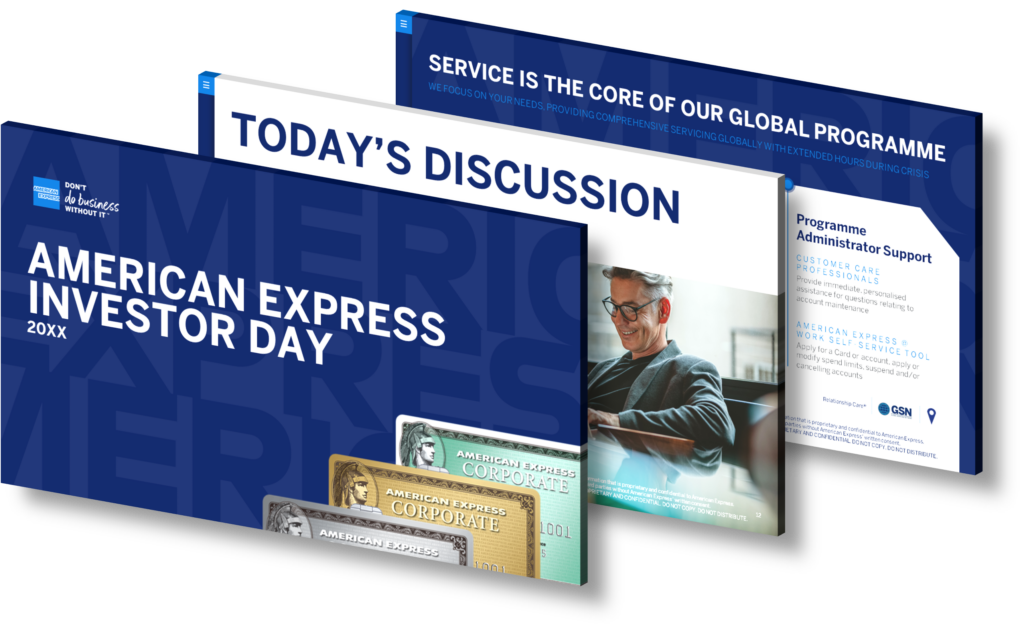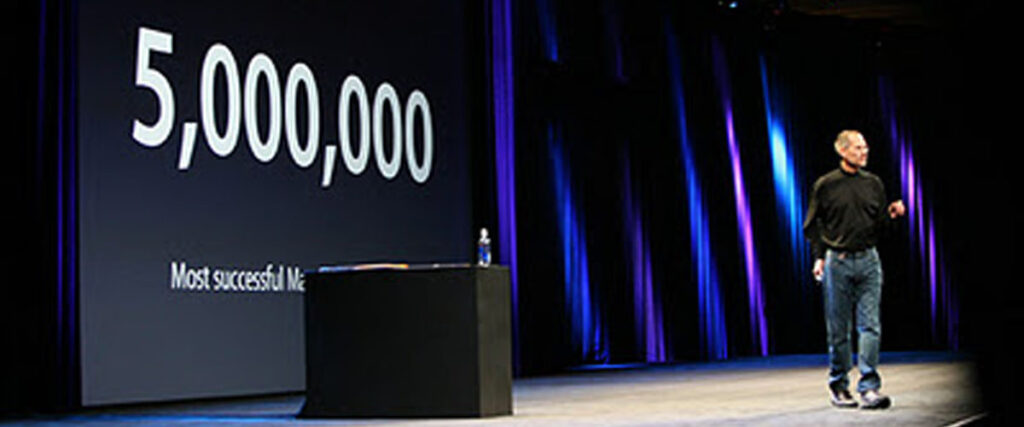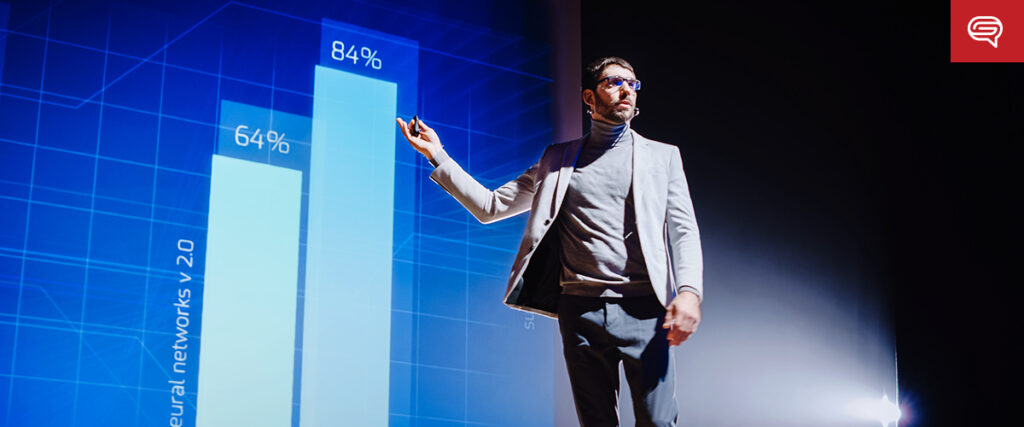How can executives leverage customizable templates for consistent brand identity in multi-channel sales pitches?
Executives have the power to leverage customizable templates to establish a consistent brand identity across multi-channel sales pitches. These templates serve as a base design that carries all the essential elements of your brand identity, including color schemes, logos, typography, and overall aesthetic. When used consistently, they provide a unified and recognizable face to your brand.
Boosting Recognition
Templates imbued with your brand identity make your presentations instantly recognizable to your audience. This consistent usage of design elements, such as colors and fonts, reinforces your brand image in the minds of your audience, making it more memorable.
Efficiency and Consistency
Customizable templates save time and ensure consistency. Instead of building presentations from scratch, your team can work from a pre-established framework, ensuring all your pitches maintain the same visual identity. This reduces the possibility of off-brand presentations and ensures that all your communication channels are aligned.
Flexibility
Despite their structure, customizable templates offer flexibility. They can be tweaked according to the specific requirements of a given presentation or audience while still maintaining your brand’s visual identity. This makes them a versatile tool in multi-channel sales pitches, as they can be adapted to different platforms while keeping a consistent brand image.
Professionalism
Lastly, a consistent design across your presentations conveys a sense of professionalism. It shows that your company values consistency and pays attention to detail, which can enhance your reputation in the eyes of potential clients or partners.
Therefore, by using customizable templates for presentations, executives can ensure that their brand identity is consistently presented, which can ultimately increase brand recognition, save time, offer flexibility, and convey professionalism.
View Our Presentation Portfolio

What are some examples of the best presentations of all time?

Here are some examples of the best presentations of all time, known for their innovative design, storytelling, and powerful delivery:
1. Steve Jobs’ iPhone Launch (2007)
Steve Jobs’ iPhone launch presentation in 2007 is considered one of the most iconic tech presentations ever. His clear, simple slides combined with excellent storytelling captivated the audience. Jobs used minimal text and stunning visuals, focusing on live product demonstrations to keep the audience engaged. The iPhone launch presentation was effective because of its simplicity, clarity, and strong narrative.
Key Takeaways:
- Simplicity: Minimalist slides with high-quality images.
- Storytelling: Jobs used a three-act structure, building excitement and suspense leading up to the big reveal of the iPhone.
2. TED Talk: Ken Robinson’s “Do Schools Kill Creativity?” (2006)
Sir Ken Robinson’s TED Talk on creativity in education is one of the most-watched TED presentations of all time. Robinson’s natural storytelling ability, combined with humor and a thought-provoking message, makes this presentation a masterpiece. He engaged the audience through personal anecdotes and a conversational tone, rather than relying heavily on visuals.
Key Takeaways:
- Engagement through storytelling: Robinson used relatable examples and humor to keep the audience engaged.
- Emotional resonance: His presentation highlighted a critical issue (creativity in education) with passion and sincerity.
3. Simon Sinek’s “Start With Why” TED Talk (2009)
In his famous TED Talk, Simon Sinek introduces the concept of the Golden Circle, explaining why some leaders and organizations inspire while others don’t. His clear and simple diagram helped convey a complex idea in a digestible way, and his presentation style was conversational, allowing the audience to easily follow the message.
Key Takeaways:
- Visual simplicity: Sinek used simple, hand-drawn diagrams to explain his concepts.
- Clarity and focus: He narrowed his message to one central idea — “Start with why” — making it easy to remember.
4. Al Gore’s “An Inconvenient Truth” (2006)
Former Vice President Al Gore’s presentation on climate change, which became the basis for the film An Inconvenient Truth, is renowned for its use of powerful visuals and clear data. Gore effectively used infographics, charts, and images to explain the severity of climate change in a way that was both accessible and persuasive.
Key Takeaways:
- Data visualization: Gore used compelling charts and graphs to present complex data in an understandable way.
- Emotional appeal: The combination of data and emotional storytelling made the presentation resonate with viewers.
5. Nancy Duarte’s “The Secret Structure of Great Talks” (2011)
Nancy Duarte, a leading presentation design expert, gave a TED Talk on how great speakers use a specific structure to engage their audiences. She compared famous speeches by Steve Jobs and Martin Luther King Jr. to demonstrate how contrasting ideas (what is and what could be) make presentations powerful.
Key Takeaways:
- Contrasting structure: Duarte emphasizes the importance of comparing the present reality with the ideal future.
- Analyzing patterns: By dissecting famous speeches, Duarte showed how patterns in speech structure lead to greater impact.
6. Bill Gates’ Mosquito Demo at TED (2009)
In his TED Talk on malaria prevention, Bill Gates used a live demonstration to drive home his point. He famously released mosquitoes into the audience to simulate the danger of malaria, creating a visceral experience that left a lasting impact.
Key Takeaways:
- Dramatic demonstration: Gates’ live demonstration grabbed the audience’s attention and made the topic more relatable.
- Simplicity in messaging: Gates delivered complex information in a straightforward and understandable manner.
7. Elizabeth Gilbert’s TED Talk: “Your Elusive Creative Genius” (2009)
Author Elizabeth Gilbert’s TED Talk on creativity is an excellent example of storytelling and personal vulnerability. Her presentation addressed the challenges of maintaining creative output and how society places unrealistic expectations on artists and creatives.
Key Takeaways:
- Personal storytelling: Gilbert used her own experiences to connect emotionally with the audience.
- Engaging delivery: Her conversational style and humor made a complex subject approachable.
8. Barack Obama’s 2008 Presidential Victory Speech
Barack Obama’s victory speech in 2008 is one of the most inspiring and effective political presentations of modern times. Obama used repetition (“Yes we can”) and a hopeful, inclusive message to energize and unite the audience. His delivery was emotionally charged and carefully crafted to resonate with millions.
Key Takeaways:
- Repetition for emphasis: The phrase “Yes we can” became a rallying cry, reinforcing his message of hope and change.
- Emotional appeal: Obama’s speech focused on universal values, making it relatable to a broad audience.
9. Elon Musk’s Tesla Powerwall Presentation (2015)
Elon Musk’s Tesla Powerwall presentation introduced the world to a new form of energy storage. His use of simple visuals, live demos, and straightforward explanations made a complex product accessible. Musk also unveiled the product in a dramatic fashion, revealing the Powerwall at the perfect moment to surprise the audience.
Key Takeaways:
- Live demo: Musk revealed the Powerwall in a surprising, engaging way that kept the audience intrigued.
- Simple visuals: Minimal slides with direct messaging allowed the product to be the star of the presentation.
10. Martin Luther King Jr.’s “I Have a Dream” Speech (1963)
Although not a traditional PowerPoint presentation, Martin Luther King Jr.’s “I Have a Dream” speech is one of the greatest orations of all time. The use of repetition, strong imagery, and an emotional appeal makes it an ideal model for anyone looking to craft a powerful, inspirational presentation.
Key Takeaways:
- Repetition for impact: King’s repeated use of the phrase “I have a dream” unified his message and made it memorable.
- Vivid imagery: King used descriptive, evocative language to paint a picture of his vision for the future.
Conclusion
The best presentations of all time share common elements: clear messaging, powerful storytelling, engaging visuals, and ...
Category: Best PresentationsWhat are some examples of the best presentations ever made?

Several presentations have gained recognition for their exceptional delivery, compelling content, and impactful design. Here are some examples of presentations that are often cited as some of the best ever made, along with key elements that made them stand out:
1. Steve Jobs’ iPhone Launch (2007)
Key Elements:
- Storytelling: Steve Jobs was a master storyteller. He framed the iPhone as three revolutionary products in one (a phone, an iPod, and an internet communicator) and built suspense leading up to the reveal.
- Simplicity: The slides were simple, with minimal text and high-quality visuals, allowing Jobs to be the focus of the presentation.
- Demonstration: Live demos showcased the product’s features, making the benefits tangible for the audience.
- Engagement: Jobs engaged with the audience through humor and interaction, making the presentation memorable.
2. Martin Luther King Jr.’s “I Have a Dream” Speech (1963)
Key Elements:
- Emotional Appeal: Dr. King’s speech was powerful due to its emotional resonance. He used vivid imagery and repetition to emphasize key points.
- Clarity and Structure: The speech had a clear structure, with a logical progression from the current struggles to the hopeful future.
- Passion: Dr. King’s passion and conviction were evident, which inspired and moved the audience.
- Universal Message: The speech addressed universal themes of justice and equality, making it timeless and relevant.
3. Simon Sinek’s TED Talk “How Great Leaders Inspire Action” (2009)
Key Elements:
- Golden Circle Concept: Sinek introduced the concept of the Golden Circle (Why, How, What), which provided a new framework for understanding leadership.
- Visual Aids: He used simple visual aids to illustrate his points, making complex ideas easier to grasp.
- Relatable Examples: Sinek used relatable examples, such as Apple and Martin Luther King Jr., to connect with the audience.
- Engaging Delivery: His delivery was engaging, with a conversational tone that drew the audience in.
4. Al Gore’s “An Inconvenient Truth” (2006)
Key Elements:
- Data-Driven: The presentation was rich in data and statistics, which provided credibility and urgency to the message about climate change.
- Visual Impact: Gore used powerful visuals, including graphs, charts, and images, to make the data compelling and understandable.
- Clear Call to Action: The presentation ended with a clear call to action, encouraging the audience to take steps to combat climate change.
- Personal Connection: Gore connected the issue to his personal journey and experiences, making the message more relatable.
5. Nancy Duarte’s TED Talk “The Secret Structure of Great Talks” (2011)
Key Elements:
- Analytical Framework: Duarte introduced a framework for understanding the structure of great talks, comparing them to stories and movies.
- Visual Storytelling: She used engaging visuals and examples from famous speeches to illustrate her points.
- Educational Content: The presentation was educational, providing actionable insights for creating impactful presentations.
- Engaging Style: Duarte’s delivery was confident and engaging, keeping the audience interested throughout.
6. Elon Musk’s Tesla Powerwall Announcement (2015)
Key Elements:
- Visionary Message: Musk’s presentation was focused on a grand vision of sustainable energy and how Tesla’s products fit into that future.
- Clear Benefits: He clearly explained the benefits of the Powerwall and how it could revolutionize energy consumption.
- Demonstration: Musk used a live demonstration to show the Powerwall in action, adding credibility to his claims.
- Visuals: The presentation featured high-quality visuals and animations to illustrate complex concepts simply.
7. Bill Gates’ TED Talk “Mosquitos, Malaria, and Education” (2009)
Key Elements:
- Shocking Visuals: Gates used a jar of mosquitoes to shock and engage the audience, highlighting the seriousness of malaria.
- Storytelling: He used personal anecdotes and stories to make the data relatable and impactful.
- Data and Solutions: Gates presented data on malaria and proposed solutions, showing a clear path forward.
- Philanthropic Message: The talk emphasized Gates’ commitment to global health and education, reinforcing his philanthropic image.
Conclusion
The best presentations ever made share common elements such as storytelling, simplicity, emotional appeal, engaging delivery, and the use of powerful visuals. These presentations effectively communicated their messages, inspired their audiences, and left a lasting impact. Whether for business, advocacy, or education, these examples provide valuable lessons on how to create compelling and memorable presentations.
Category: Best Presentations